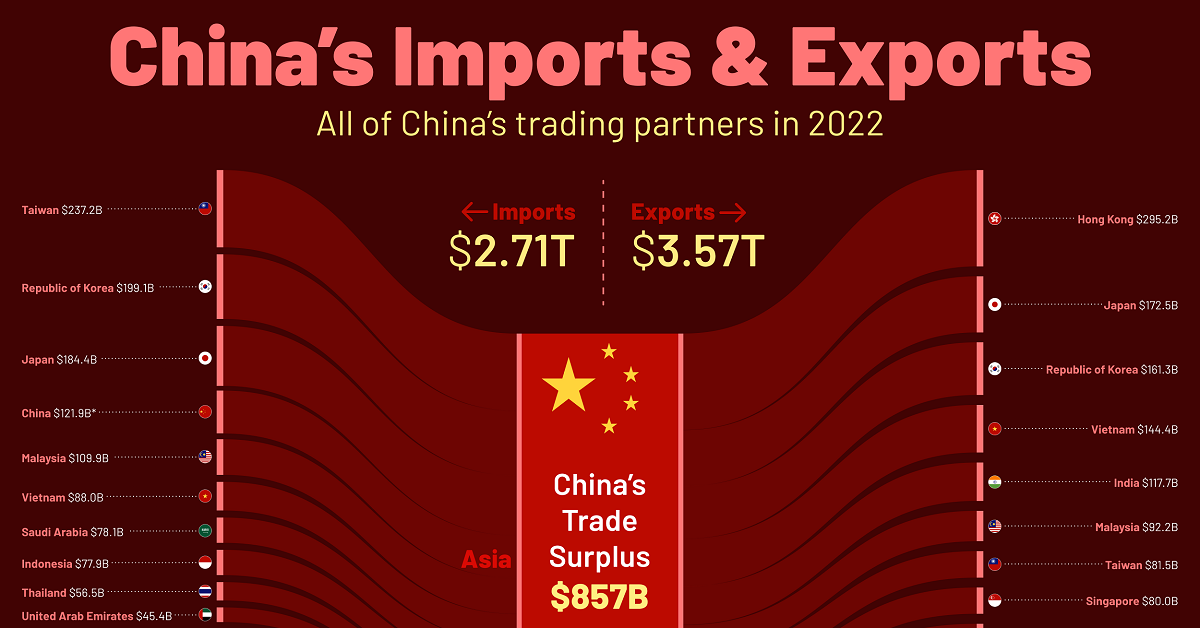China's foreign trade with other BRICS countries increased by 19.1 percent in the first seven months of 2023, accounting for 10.1 percent of China's total foreign trade value during that period.
Trade between the US and Mexico has surpassed China and Canada as America's top trade partner, reaching $263 billion in the first four months of 2022, indicating a shift towards regional trade and nearshoring.
The US dollar will remain dominant in global trade, but China's yuan is gaining popularity among developing countries such as Russia, Brazil, India, and South Africa.
Despite U.S. trade shifting away from China, the country still relies on China-linked supply chains, leading to higher costs for consumers and uncertain benefits in terms of improved manufacturing efficiency, according to research presented at a Federal Reserve symposium.
China's economy is facing multiple challenges, including tech and economic sanctions from the US, structural problems, and a decline in exports, hindering its goal of becoming a top global exporter and tech power, which could have long-lasting effects on its status in international relations and the global economy.
China's economic slowdown is causing alarm worldwide, with countries experiencing a slump in trade, falling commodity prices, and a decrease in Chinese demand for goods and services, while global investors are pulling billions of dollars from China's stock markets and cutting their targets for Chinese equities.
China's economy is struggling due to an imbalance between investments and consumption, resulting in increased debt and limited household spending, and without a shift towards consumption and increased policy measures, the economic slowdown may have profound consequences for China and the world.
China's growing arsenal introduces new variables to the calculus of the cold war, while America and India grapple with truancy rates and the state of their technological backbone, respectively.
China's share of US goods imports has dropped to its lowest level since 2006, as American companies reorganize supply chains to reduce dependence on China and shift to countries like Mexico and Vietnam.
China's total import and export value in the first 8 months of this year slightly decreased by 0.1 percent compared to the previous year, but exports have continued to grow and the global market share remains stable, highlighting the overall stability of China's foreign trade operations.
The US, Saudi Arabia, India, and other nations are discussing a potential infrastructure deal to enhance trade between the Gulf and South Asia through railways and ports, in an effort to counter China's Belt and Road initiative.
China's economic challenges, including debt, unfavorable demographics, and a stagnating growth rate, have implications for global trade and the ambitions of President Xi Jinping, potentially leading to unforeseen consequences and strategic shifts.
China's economic problems are more likely to impact its neighboring countries and Europe than the United States, according to U.S. Deputy Treasury Secretary Wally Adeyemo, who emphasized the need for China to address its structural economic issues.
U.S. and European firms are shifting investment away from China to other developing markets, with India receiving the majority of redirected foreign capital, due to concerns over China's business environment, economic recovery, and politics. However, diversification is unlikely to result in a rapid decline in exposure to China as the markets foreign firms are investing in are still heavily reliant on trade and investment with China.
The trade sanctions imposed on Russia have benefited India and China, with Russia becoming the biggest supplier of crude oil to India and the bilateral trade between Russia and China potentially surpassing $200 billion this year, resulting in the US reshaping its global trade strategies and Mexico overtaking China as America's biggest trading partner.
China's struggling economy, including its deflation and property crisis, will have a significant impact on the US due to its high foreign investment exposure in China and the dependence of key exporting countries like Chile, Australia, and Peru on the Chinese market.
China has promised to increase imports from Southeast Asian countries in order to boost trade ties amidst rising tensions between China and the United States.
The emergence of a new era of Asian commerce is reshaping the continent's economic and political future, with greater regional trade, increased capital flows, and a shift towards intra-Asian investment and supply chains. This trend is driven by the growth of sophisticated supply chains, foreign direct investment, cross-border banking, and the Belt and Road Initiative, as well as the need to establish new supply chains and the rise of Asian savings and demography. The integration of Asian economies will have political ramifications, with a decline in America's economic importance and a more locally focused and less Western-facing continent.
China sees Southeast Asia as geopolitically important and will prioritize investments in the region to counter U.S. influence, despite slowing domestic growth, according to economists. Additionally, Southeast Asia is a crucial source of critical minerals for China's green technology and electric vehicle ambitions.
Asian economies are increasingly investing in their own region, leading to greater trade integration and financial flows within Asia, as well as significant investments in infrastructure and development finance, with implications for the global economic and political landscape.
